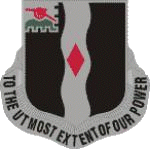9th Infantry Division
For the period of 1 Oct - 27 Oct 1944


PART II
The Regimental activities in the TODTENBRUCH area during the month of October represents a period of attacking through dense forests under adverse weather conditions against enemy fortified positions. Seldom was air support available and only occasionally was it possible to observe and adjust supporting artillery fire. This type of warfare was very unusual for this Regiment and it was necessary to adapt new tactics and techniques.
One of the first things that was found necessary was to devise a means for adjusting artillery and mortar fire in dense woods. It was even impossible to pick up rounds of smoke and so it was necessary to do all adjusting by sound. At first it was found that a large number of rounds were needed but as experience was gained only four to six rounds were necessary to bring fire in close to friendly troops. It was discovered that fire appears to be farther away than it actually is in dense, low scrub, that it seems closer in tall, relatively clear forests because of the added noise tree bursts.
Effectiveness was greater in lower trees than in taller trees. Forward observers would call for a round 300 to 400 yards beyond the target in the case of light artillery is and 200 to 300 yards for 81mm mortars. Each round was "pulled" in closer using the "creeping" method. When the target was reached fire for effect was kept to the minimum number of rounds necessary because short rounds burst even shorter when they strike overhead foliage.
Night operations were found to be physically impossible. The persistent cloudy weather and the added darkness of being in the forests made it totally black and one hour before dark troops commenced consolidating positions and organizing defensive positions for the night. It was necessary to evacuate all POW's and wounded, complete all feeding, resupplying and messenger runs before darkness and it was necessary to complete plans for the next day in time to permit any necessary reconnaissance and changes in troops dispositions during daylight hours. This condition also made it necessary to employ many trip flares and booby-traps on outposts to prevent unobserved enemy from breaking through friendly lines.
Protection over individuals against enemy shell fire was a problem in dense woods. Practically all rounds were tree bursts and the ordinary foxholes and slit trenches were insufficient. Each man was required to construct a slit trench covered over with thick logs and sod and his shelter-half. This trench had a sufficiently large entrance to enable the occupant to make a hastily exit. In addition each man was required to dig a standing type foxhole with the same type overhead cover near his slit trench from which he could fight.
It was soon discovered that when caught under enemy shell fires which burst in trees overhead that it was not always wise to lie prone on the ground. Fragments that would strike a man came straight down while others would lodge in nearby trees. In most cases the maximum cover was obtained by crouching against the base of a tree with the tree between the person and can the direction of the enemy guns. Lying prone only exposed a greater portion of the body to shell fragments.
Tactics for small units were somewhat changed when the Regiment conducted the TODTENBRUCH area. For the first time it operated in a dense, thick terrain very similar to jungle. Conduct of the individual was changed when he very rarely moved about alone and never did he move without constantly observing to all flanks and rear. The use of automatic weapons was increased and units desired more BAR's and submachine guns. Formations were constantly unorthodox, those that would bring a weight to bear on the objective to the front but still be ready to instantly turn and fight the enemy from any direction at very close quarters. Squad and platoon combat teams were literally "moving" defensive strong points.
The TODTENBURCH Campaign rounds out this unit's experience of fighting in all types of terrain. It is strongly recommended that some previous training in forest fighting be given units destined to operate in woods as this type of fighting is radically different from others and a basic knowledge of what is necessary will save many lives and give assurance of obtaining the objective.
Capt. Infantry.
Asst. S-3.

